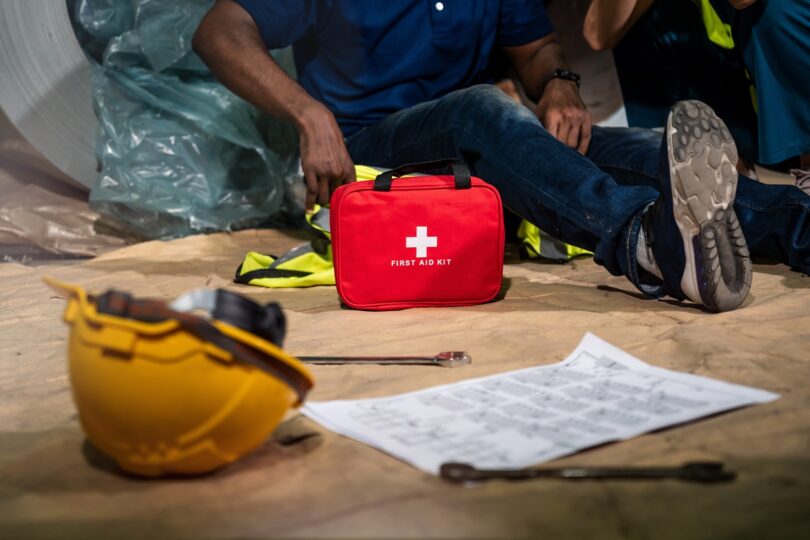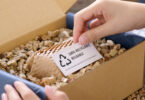Try as you might, but unfortunately accidents can and do happen – at home, in the workplace, in schools, and even in expected places such as a shopping centre.
When they do happen, the first questions are usually “why did it happen?” or “how did it happen?”. Well, we cannot always predict what life throws at us, which means having a well-stocked first aid kit on hand essential.
When it comes to medical emergencies, a minute can make all the difference to the patient and the outcome, and a well-stocked first aid kit can save the day. A first aid kit can help you deal with medical emergencies quickly, preventing further complications before professional help arrives.
If you plan to purchase first aid kit supplies for your workplace, here are some essentials that you should consider stocking up on first.
Ensure workplace safety with these must-have medical dressing kit essentials
Before we get started on the first aid essentials, it is worth noting that first aid kits’ contents vary according to the particular environment and use. For example, an office first aid kit may contain different items from a school first aid kit. We will cover first aid kit customisation (an important topic) at the end. For now, let’s first have a look at the basics that should be included in every first aid kit.
Triangular bandages
Triangular bandages are an indispensable first aid kit supply used to hold splints in place and restrict movements of an injured limb. Triangular bandages are also non-elastic and can be used as a pad to control bleeding and protect injuries from infections.
Non-adhesive dressings (varying sizes)
Non-adhesive dressings come in handy when one has an extensive surface wound such as an abrasion or first-degree or second-degree burns. They are also helpful for patients with sensitive and fragile skin, including those with leg ulcers.
Crepe or elastic roller bandages (varying widths)
Crepe bandages are essential first aid kit supplies made of cotton. They are perfect for supporting the healing of sprains and strains as they offer good compression. However, their elastic nature doesn’t prevent joints or muscles from flexing.
Disposable gloves
With many injuries coming with various infections, you want to make sure you are well protected from spreading infections. This is where disposable gloves are a lifesaver when it comes to addressing open wounds. Remember to dispose of the gloves safely after use.
Emergency blankets
Emergency blankets, also referred to as ‘thermal blankets’, are one piece of equipment you should never miss in your medical dressing kits. In the event of a fatal accident, thermal blankets are used to keep the injures warm in cold conditions.
Emergency blankets trap body heat, keeping the victim insulated naturally. If you are concerned that emergency blankets won’t fit in your kit, it’s worth remembering while bulky, they are lightweight and easy to pack.
Adhesive dressing strips of varying sizes
Adhesive dressing strips work more like band aids. They consist of a non-stick wound pad surrounded by adhesive material. Thesefirst aid kit supplies help keep the dressing in place without bandages or tape.
Other general first aid supplies to keep in stock include the following:
- a pair of scissors;
- a pair of tweezers;
- first aid instruction booklet;
- antiseptic wipes;
- safety pins;
- sterile eye pads;
- a permanent marker, notebook, and pen;
- rubbish bags to dispose of waste;
- alcohol swabs;
- sterile tubes of saline solution;
- resuscitation face masks (disposable); and
- pain relievers (such as acetaminophen or ibuprofen).
Three steps for storing and organising your workplace first aid kit
#1: Choosing the appropriate container
It’s not always necessary to purchase a separate container for your first aid kit supplies. That said, if you do invest in one, you want to go for one that fits all your needs.
Plastic first aid kit containers are perfect for small or midsize workspaces, but the disadvantage is that it really can only be used in the workplace due to its limited space.
Metal first aid kit containers, on the other hand, are perfect for outdoor areas because they have added protection from the elements, such as water. Cloth bags are a game changer as they have features such as zippers, pockets, and compartments. This is an excellent way of keeping things organised.
#2: Properly labelling and organising items
If you want to make the most of your first aid kit during emergencies, you need to know how to clearly label items and where to put them. This helps reduce wasting time during emergencies.It’s not always necessary to purchase a separate container for your first aid kit supplies. That said, if you do invest in one, you want to go for one that fits all your needs.
For efficiency, use clear labels indicating item names and their purpose. Next, you want to arrange those labelled items in sections based on functionality, ensuring easy identification and retrieval.
#3: Regular reviewing and restocking of your first aid kit
Sooner or later you will run out of the medical supplies. To be on the safe side, always have first aid kit refills ready for restocking when products run low. Also, ensure that you check the expiry date of each product in your first aid kit and replace those with expired dates. Doing this helps keep you and your loved ones safe.
First aid training and education
Before you use your medical dressing kit, take the time to learn how each piece of equipment functions and how to use it on an injured person. There are many online courses that provide training sessions on how to use first aid kits. There are also first aid books available if you prefer to always have these resources on hand.
Customising first aid kits for your unique workplace needs
After you have assembled all the basic items, there are a few specialised items you may also consider adding to your first aid kit. For example, if you run a school and have kids of different ages, you’ll want to stock up on bandages in varying sizes. You’ll also want to have a wide range equipment on hand to address common injuries including scrapes and minor cuts.
In the case of allergies and medical conditions, you may want to stock up on specific prescribed medications and stock up on equipment that won’t trigger their allergies. Considering such factors can go a long to making your first aid kit more efficient, convenient, and fit for purpose.Considering such factors can go a long to making your first aid kit more efficient, convenient, and fit for purpose.
Unfortunately, accidents and injuries are a part of life. While you can’t avoid them, you can take key steps to reduce their impact on the people in your care – whether that be your company’s employees, customers or suppliers, or students or anyone else under your care.
Having a well-stocked first aid kit on hand for when the unexpected happens. The listed first aid kit supplies can help you get started. Restock and ace that day confidently, knowing your health concerns are not a threat.
“The opinions expressed by BizWitty Contributors are their own, not those of BizCover and should not be relied upon in place of appropriate professional advice. Please read our full disclaimer."







